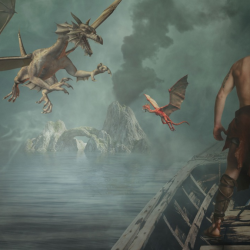From information overload, to crowded marketplaces and shortening attention spans, there’s no denying that developing show-stopping creative ideas that truly capture the hearts and minds of audiences can be a challenge in today’s world.
Which is where – and why – side quests can be so valuable.
When it comes to both inspiring our clients to push the creative boundaries and helping them connect with their most important audiences, there’s nothing more powerful than looking beyond the task at hand, and immersing ourselves in other passions.
The power of a wandering mind
Creativity is very much a natural state – we’ll often hear that people are born with the ability to paint, draw, sing, songwrite, and so forth.
This is why taking a step away from our desks and work related mindsets, and freeing ourselves from the pressures of being ‘creative’ (this term in itself means so many different things to each and every one of us) and actively pursuing other interests is an important way for the brain to soak in outside influences.
They invite us to use our brains in different ways than if we were approaching a client project. For me, this means embracing tangible experiences like drawing, painting, pottery and building in my spare time.
As there is no specific deadline or fixed direction, the mind enters a relaxed state. It can naturally wander, experiment, and comfortably explore ideas, which is where creativity organically evolves.
Given that developing unique creative concepts is a core part of my role, I also find there is immense potential in exploring art and design exhibitions and installations. We all remember how experiences like these made us feel, and pursuing them at my own leisure inspires me to recreate these feelings for our clients and their audiences.
From hobby, to project application
While partaking in these hobbies and experiences, I’ll often find that an interesting concept for a client project will pop into my head when I least expect it, too.
For me, I might be blending colours, patterns or lighting, and organically find myself considering how they could be introduced into a creative identity or a stylistic approach for screen content.
I’ll jot these initial thoughts down, so that they can be referred to at a later date and fleshed out further. While creativity is key and it’s something clients value highly – it needs to be supported by a robust strategy, and brought to life in line with their brief, budget and timeline.
There can be beauty in risk taking
At the same time, sharing left of centre creative concepts with clients can often prompt them to think differently. So much so, that their brief evolves to accommodate the idea, or elements of it, as they recognise how compelling it could be from an audience engagement perspective.
The organic thought processes that develop as we partake in our own side quests therefore not only have the ability to inspire us, but those around us.
Bringing the most memorable and effective creative ideas to life tends to involve taking some sort of a risk. However, if they are backed by audience research and thorough planning, and can be brought to life in ways that will resonate… More often than not, the risk will pay off.
Featured image: Quino Al / Unsplash
































